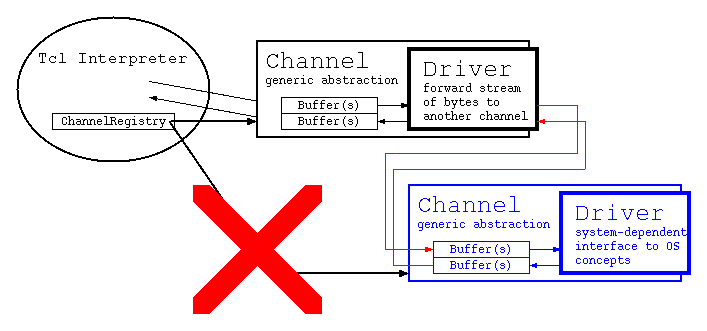|
Let us do short review of the I/O subsystem first:

The important points are:
- Every interpreter contains a registry of all
channels he knows about.
- Each channel is divided into a generic part,
managed by generic/tclIO.c, and a
system-dependent driver realizing the connection
between the generic layer and the operating system.
- The current tcl distribution implements drivers
for files, sockets and pipes, for Un*x, Windows and MacOS.
- Buffer management is the responsibility of the generic
layer.
Now that does Trf do ?
- It implements a driver forwarding all data of a channel to a
another channel. Read requests to the original channel are
forwarded to the second one too. As the forwarding channel
intercepts all information flowing into and out of the second one
it is now able to change this information at will. Possibilities
are encryption, encoding into a different representation,
additional computations like hash generation, etc. Because of this
such a channel is often called a filtering
channel too.
- The problem with the structure above is that the second channel
is still accessible from its containing intepreter, which might
cause disruption of the filtered information. To prevent that some
tricks (which do require a patch to the tcl core distribution) are
used, causing the filter to take the place of the original channel,
effectively hiding that one from the interpreter.
Visualized it looks like this:

An alternative description of the same concept is that the filter
channel wraps itself around the filtered one and encapsulates it.
The picture for that:

|



